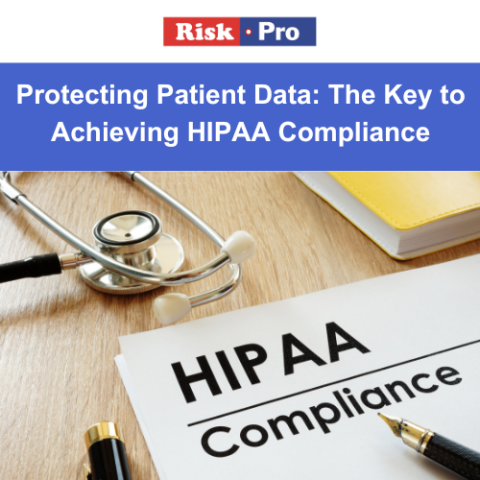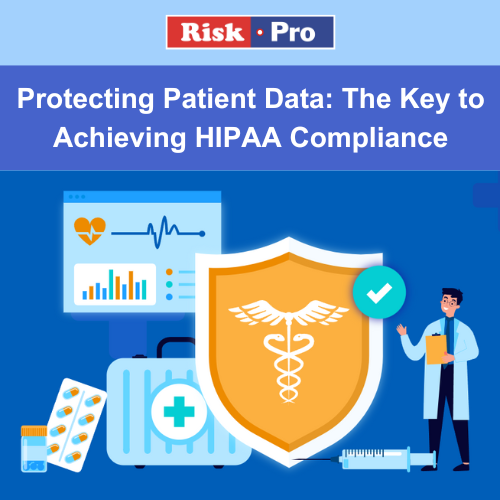
Introduction to HIPAA Compliance and Its Importance
The Health Insurance Portability and Accountability Act (HIPAA) compliance is essential for healthcare organizations and businesses that handle the protected health information PHI (Protected Health Information) of their customers. HIPAA compliance requires healthcare HIPPA.
Organizations and business associates to ensure that patient information remains secure, as well as to keep up with changing regulations. Achieving proper HIPAA compliance can be a complex process, but it is critical for companies operating in the healthcare sector to protect their customer's privacy and ensure security. Creating a culture of privacy and security begins with understanding the basics of HIPAA compliance. It's important to understand the purpose of HIPAA, its requirements, and how it applies to your organization. The goal is to create a culture that ensures customer privacy, data security, and comprehensive HHS compliance with all applicable laws and regulations.
Understanding the Basics of HIPAA Compliance
HIPAA was enacted in 1996 to protect patient privacy by regulating the use and disclosure of PHI. The Department of Health & Human Services () developed standards for protecting PHI created or maintained by a covered entity or its business associate. These standards are known as the Privacy Rule, Security Rule, Breach Notification Rule, Enforcement Rule, Omnibus Rule, Final Rules on Accounting Disclosures by Covered Entities Under the Privacy Rule, as well as other guidance documents and regulations. The Privacy Rule establishes rules for how protected health information can be used or disclosed by a covered entity or its business associate without patient authorization. This includes situations such as when treatment is necessary, or payment is required. The Security Rule sets forth standard requirements for maintaining the security of PHI on electronic systems including access control measures such as authentication systems; network monitoring; encryption technologies; physical access control measures; risk assessment processes; policies and procedures regarding data storage; employee training programs; audit processes; etc. The Breach Notification Rule requires covered entities to notify affected individuals when their PHI has been subject to an unauthorized disclosure or breach. Finally, the Omnibus Rule contains provisions related to third-party vendors who access PHI on behalf of covered entities—known as “business associates”—as well as changes related to marketing procedures from covered entities without prior authorization from individuals whose PHI will be used in marketing activities.
Creating a Culture of Privacy & Security
Developing effective policies around HIPAA compliance helps create an organizational culture focused on protecting patients’ privacy while also meeting all applicable legal requirements for data protection practices. Establishing such policies means understanding not only what is required under the law but also what works best within your organization’s environment and resources. Establishing these protocols will help ensure that all employees responsible for handling PHI are aware of their duties under HIPAA law, know what steps should be taken if sensitive information is accessed inappropriately or lost via cyber-attack or other means, understand how long records must be kept according to federal law etc., comply with any other applicable state laws regarding privacy protection etc., Organizations should create policies specific to their own operations that detail roles and responsibilities around handling protected health information (PHI), such as who has access rights at each stage in order processing or how requests for medical records should be handled securely etc., Organizations should also review existing processes regularly to ensure that they remain compliant with changing regulations or best practices when it comes to handling data securely and using appropriate tools such as encryption solutions where needed etc., Additionally regularly training employees on important matters related to HIPAA compliance is imperative for creating an effective culture around data protection practices in any organization operating in this sector etc.,

The HIPAA Privacy Rule and What It Entails
Ensuring HIPAA compliance is critical for organizations that handle health information. Guidelines for the use and storage of personal health data are established under the Health Insurance Portability and Accountability Act (HIPAA). The HIPAA privacy rule highlights people's rights regarding their information and specifies how Protected Health Information (PHI) should be maintained. Establishing a culture of security and privacy, putting rules into place, and offering training are the first steps in achieving compliance. Compliance can be proven by certification from an independent organization such as the Office for Civil Rights (OCR). Continued efforts are required to maintain compliance, such as frequent audits and risk assessments. For complete HIPAA compliance, a thorough strategy that includes employee training and protocols at all levels is required.
Steps to Achieving HIPAA Compliance
Achieving HIPAA compliance certification is essential for organizations handling medical information and data. HIPPA regulations (Health Insurance Portability and Accountability Act) compliance is a must, and organizations need to have the correct certifications in place. But it’s not only about being certified, it’s also about creating a culture of privacy and security within your organization. To create this culture, organizations must understand the HIPAA privacy rule and their responsibilities under the law.
HIPAA Privacy Rule
The HIPAA privacy rule serves as the basis of the organization’s privacy practices and requires health care providers to protect the privacy of patient information by establishing administrative policies to safeguard it from unauthorized access or use. The rule requires covered entities to develop policies and procedures for training employees in accessing, using, sharing, disclosing, retaining, disposing of, protecting, encrypting, and otherwise managing protected health information (PHI). This includes physical security measures such as locks on doors or filing cabinets that contain PHI; technical security measures such as passwords or authentication systems to access PHI; administrative security measures such as Business Associate Agreements (BAAs) with vendors who may have access to PHI; procedural security measures such as audits or periodic reviews of PHI; and risk management measures such as incident response plans if a breach occurs.
Training
Organizations should ensure all staff members are trained in their specific roles related to protecting PHI. They should be aware of what constitutes appropriate behavior when using PHI and what actions violate HIPAA regulations. All staff should be trained in how to identify potential threats or suspicious activity related to PHI. Training should also include how a breach can occur by accidental disclosure due to lack of knowledge about proper procedures.
Communication
Organizations need to ensure all staff are aware of any changes in privacy policies or procedures that could affect their work with PHI. Regular communication can help foster an environment where everyone is aware of new regulations or changes in policy so they can better adhere to them. Establishing open communication channels between different departments can help build an overall culture of compliance within the organization.
Monitoring
Organizations need an effective system for monitoring employees’ use of patient data and other sensitive information. This includes tracking user activity for any suspicious behavior that could lead to a data breach. Monitoring systems can detect any unusual activity so appropriate action can be taken before any harm is done. Additionally monitoring systems provide evidence if needed in case there is a dispute between an employee or vendor regarding unauthorized access or use of Patient Rights under HIPAA requirements data. Creating a culture of privacy and security for organizations means having a thorough understanding of HIPAA regulations so they are compliant with all aspects outlined in the law including physical security measures, technical security measures, administrative security measures, procedural security measures, risk management measures training protocols communication channels and monitoring systems. By having a clear understanding about these components organizations can make sure they are meeting all requirements needed for full compliance with HIPPA security.
Benefits of Achieving HIPAA Compliance
Creating a culture of privacy and security is an essential step in achieving HIPAA Enforcement compliance. Achieving HIPAA compliance requires organizations to prioritize and invest in policies and procedures that protect the privacy and security of personal health information (PHI). The HIPAA Privacy Rule ensures that all PHI is treated with respect, setting standards for how it is accessed, used, disclosed, and maintained. With the proper safeguards in place, organizations can achieve HIPAA compliance audit and protect their patients' data.
Organizations need to have systems in place to monitor for unauthorized access or disclosure of PHI. This includes regular audits, risk assessments, encryption protocols, authentication methods, and access control procedures. The goal is to ensure that only authorized personnel can access PHI while also preventing any attempts at malicious activities such as hacking or phishing attacks.
Conclusion
Creating a culture of privacy and security is essential for organizations to achieve HIPAA compliance. Healthcare organizations must implement policies and procedures that promote best practices in privacy and security. Achieving full HIPAA compliance is an ongoing process that requires constant monitoring. By dedicating time, resources, and training to create a culture of privacy and security, organizations can ensure they meet all applicable standards required for full HIPAA certification. To know more contact us at info@riskpro.in
